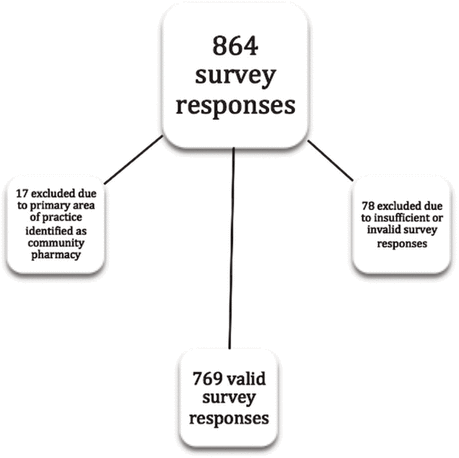
Figure 1. Responses to an electronic survey seeking hospital pharmacists’ opinions on marijuana for medical purposes.
Fiona Mitchell, Odette Gould, Michael LeBlanc, Leslie ManuelABSTRACT
Background:
Canada’s most recent Marihuana for Medical Purposes Regulations have changed the way in which patients access marijuana. Furthermore, if authorized by the person in charge of the hospital, a pharmacist practising in a hospital may now place orders with licensed producers for dried marijuana for in-hospital use by patients. As use of this product increases, hospital pharmacists may have an increased role in the care of patients who are using marijuana for medical purposes.
Objectives:
The primary objective of this study was to determine the opinions of hospital pharmacists in Canada regarding marijuana for medical purposes. The secondary objective was to assess the factors influencing these opinions.
Methods:
An online survey was made available in early 2015 to licensed hospital pharmacists in Canada through individual provincial and territorial pharmacy regulatory bodies, pharmacist associations, hospital pharmacy directors, the Canadian Society of Hospital Pharmacists, and the Association des pharmaciens des établissements de santé du Québec. Responses were based on a 5-point Likert style scale, ranging from “completely agree” to “completely disagree”.
Results:
A total of 769 valid survey responses were received. Among the respondents, 44.6% (333/747) agreed that marijuana is safe, whereas 55.2% (411/745) agreed that it is effective. Only 17.2% (129/748) agreed that they were knowledgeable about marijuana for medical purposes, and about 65% of respondents reported no formal training in this area. Factors that influenced respondents’ opinions were age, education, area of clinical practice, province of work, and personal experience.
Conclusion:
Many Canadian hospital pharmacists agreed that marijuana for medical purposes is safe and effective, yet few considered themselves knowledgeable about this substance, with more than half reporting no formal training on the topic.
KEYWORDS: medical marijuana, Marihuana for Medical Purposes Regulations, hospital pharmacists, safety, efficacy, knowledge
RÉSUMÉ
Contexte :
Le Règlement sur la marihuana à des fins médicales récemment mis en vigueur au Canada a changé la façon dont les patients ont accès à ce produit. En outre, s’il est autorisé à le faire par la personne à qui est confiée la charge de l’hôpital, le pharmacien qui exerce dans un hôpital peut maintenant commander auprès de producteurs autorisés de la marihuana séchée destinée à une personne qui reçoit un traitement comme patient hospitalisé. Au fur et à mesure qu’augmente l’utilisation de cet agent, les pharmaciens d’hôpitaux pourraient avoir un rôle plus important à jouer dans les soins aux patients qui consomment de la marihuana à des fins médicales.
Objectifs :
L’objectif principal de la présente étude était de sonder l’opinion des pharmaciens d’hôpitaux du Canada sur la question de la marihuana à des fins médicales. Le second objectif était d’évaluer les facteurs qui influencent leur opinion.
Méthodes :
Un sondage en ligne a été mis à la disposition des pharmaciens d’hôpitaux du Canada avec la participation des organismes provinciaux et territoriaux de réglementation de la pharmacie, des associations de pharmaciens, des directeurs de pharmacie hospitalière, de la Société canadienne des pharmaciens d’hôpitaux et de l’Association des pharmaciens des établissements de santé du Québec. Inspirés de l’échelle de Likert à cinq points, les choix de réponse s’étendaient de « fortement en accord » à « fortement en désaccord ».
Résultats :
Au total, 769 réponses valides au sondage ont été obtenues. Parmi les répondants, 44,6 % (333/747) ont affirmé que la marihuana est sécuritaire et 55,2 % (411/745) ont déclaré qu’elle est efficace. Seuls 17.2 % (129/748) ont affirmé être renseignés sur l’utilisation de la marihuana à des fins médicales et environ 65 % ont indiqué n’avoir aucune formation officielle sur le sujet. L’âge du pharmacien, sa formation, son domaine de pratique clinique, sa province d’exercice et son expérience personnelle étaient des facteurs influençant son opinion.
Conclusion :
Bon nombre de pharmaciens hospitaliers canadiens ont affirmé que l’utilisation de la marihuana à des fins médicales est sécuritaire et efficace. Or, peu considéraient être renseignés à propos de ce produit et plus de la moitié ont indiqué n’avoir aucune formation officielle sur le sujet.
MOTS CLÉS: marihuana à des fins médicales, Règlement sur la marihuana à des fins médicales, pharmaciens d’hôpitaux, sécurité, efficacité, connaissance
Canada’s Marihuana Medical Access Regulations were first introduced in 2001. Since then, the number of people authorized to use marijuana for medical purposes (MMP) has increased from fewer than 500 to more than 50 000 in late 2015.1–3 Canadians are among the highest users of marijuana worldwide, with 10.6% of the general population reporting past-year use of marijuana in 2012.4 Canada’s most recent Marihuana for Medical Purposes Regulations have changed the way in which patients access MMP.5 Effective April 1, 2014, MMP in Canada must be prescribed by a physician or nurse practitioner and must be dispensed to the patient by a licensed producer. As of March 2016, 30 licensed producers were listed on Health Canada’s website.6 Producers of MMP are licensed by Health Canada only after meeting all of the requirements of the Marihuana for Medical Purposes Regulations, including security measures, good production practices, packaging, labelling, shipping, and record-keeping.5
MMP has been advocated for a wide range of conditions, including glaucoma, nausea, AIDS-associated anorexia, chronic pain, inflammation, multiple sclerosis, epilepsy, and post-traumatic stress disorder.7,8 Chronic pain and AIDS-associated anorexia and wasting syndrome are the only indications that have been supported by randomized controlled trials.8–11 MMP can be smoked or inhaled through a vaporizer, but there is currently no widely accepted method of administration of MMP in Canadian hospitals.
If authorized by the person in charge of the hospital, a pharmacist practising in a hospital may place orders with licensed producers for dried marijuana for in-hospital use by patients.12 To the authors’ knowledge, there are no statistics on acquisition of MMP by pharmacists. As the use of MMP in Canada continues to grow, pharmacists may find themselves having an increased role in the care of patients with prescriptions for MMP.
There have been no studies published to date examining the opinions of hospital pharmacists on the use of MMP. However, there have been studies investigating pharmacists’ opinions about natural health products (NHPs).13–19 Health Canada defines NHPs as naturally occurring substances that are used to restore or maintain good health, including vitamins, minerals, herbal remedies, homeopathic medicines, traditional medicines, probiotics, and dietary products such as amino acids and essential fatty acids.20 MMP and most NHPs are made from plant sources and may be used in conjunction with conventional medicines or when conventional medicines have failed or are contraindicated. NHPs do not require a prescription for use but are regulated by Health Canada and must undergo an approval process to ensure that their safety and efficacy are supported by evidence. Unlike NHPs, MMP has not been approved for use by Health Canada and is not considered an NHP under the Natural Health Products Regulations. NHPs are available to consumers in pharmacies and health product stores, but MMP is not available in these outlets. However, marijuana is also used as a recreational drug. The use of both MMP and NHP remains a controversial topic because the evidence to support their efficacy and safety is limited.
The purpose of this study was to determine hospital pharmacists’ opinions about MMP and to assess the factors influencing these opinions. On the basis of available evidence on pharmacists’ opinions of NHPs, and the similarities between NHPs and MMP, it was hypothesized that pharmacists’ opinions on MMP would be affected by a variety of factors, including age, sex, province of work, area of clinical practice, level of education, MMP-related education, and personal experience with MMP.13–19 The primary objective of the study was to determine pharmacists’ opinions about MMP, specifically its safety and effectiveness, and their level of comfort in providing advice about MMP to patients and to other health care professionals. The secondary objective was to investigate differences in pharmacists’ opinions about MMP in relation to factors such as age, sex, province of work, previous or current practice area, level of education, education about MMP, and personal experience with MMP.
FluidSurveys, an online software tool available at fluid-surveys.com, was used to develop a 35-question web-based anonymous survey. The survey was available in both French and English during the months of January and February 2015. Because of the similarities between MMP and NHP (described above), the research team adapted some of the survey questions from 2 prior surveys on pharmacists’ opinions about NHPs.13,17 The current survey was created for the purpose of the study and was evaluated by 3 practising pharmacists at the authors’ institution, as well as a university-based researcher in medication adherence. The survey was also piloted by 10 community pharmacists before distribution, to help in assessing its clarity and length. The survey was then distributed to hospital pharmacists in Canada through individual provincial and territorial pharmacy regulatory bodies, pharmacist associations, hospital pharmacy directors, the Canadian Society of Hospital Pharmacists, and the Association des pharmaciens des établissements de santé du Québec. One reminder invitation was sent to these parties via e-mail at the study midpoint.
Completion of the survey was deemed to imply consenting to participate in the study. The survey was anonymous and presented no risk of harm to participants; therefore, signed informed consent was not requested. The research protocol was reviewed and approved by the Horizon Health Network Research Ethics Board in December 2014. This study was conducted in accordance with the ethical standards of the responsible committee(s) on human experimentation (institutional and national) and the Helsinki Declaration. Pharmacists who identified their primary area of practice as community pharmacy were excluded from the study.
Descriptive statistics were calculated for all respondents. Individual respondents were included only in analyses of survey items for which they provided answers. Means and standard deviations are presented for continuous variables, whereas counts and proportions are presented for categorical variables. The 3 main outcomes were pharmacists’ opinions about the safety of MMP, the effectiveness of MMP, and their own knowledge about MMP. Responses were measured on a 5-point Likert style scale ranging from “completely agree” to “completely disagree”. For the purposes of analysis, responses were dichotomized as “Agreed” (which included responses of “completely agree” and “somewhat agree”) and “Did not agree” (which included responses of “neutral”, “somewhat disagree”, and “completely disagree”).
Associations between demographic factors and each of the 3 outcomes were tested. The demographic factors of interest were age, sex, province of work, current and previous practice areas, level of education, MMP-related education, and personal experience (defined as having one’s own prescription for MMP or knowing someone either personally or professionally with a prescription for MMP). Associations between each of the outcomes and categorical variables were assessed with χ2 tests, whereas associations with continuous variables were examined with t tests.
Multivariate logistic regression models were constructed to examine the adjusted relationships between demographic covariates and the 3 main outcomes. Initially, all covariates of interest were fit independently to a simple logistic regression model on each of the 3 outcomes. Variables with p values less than 0.20 were retained for the multivariate model-fitting stage. For each outcome, a final model was selected using a stepwise procedure with the Aikake Information Criterion. All analyses were conducted using R software, version 3.0.2 (The R Foundation; https://www.r-project.org/).
A total of 769 valid survey responses were received (Figure 1). Based on the 2015 pharmacist statistics of the National Association of Pharmacy Regulatory Authorities21 and excluding Alberta, which does not make such statistics available, this sample represents about 13% of hospital pharmacists in Canada. However, representation from 10 provinces and 2 territories was achieved (Table 1). Respondents had a mean age of 40.5 years (standard deviation [SD] 11.1 years) and had been practising for an average of 16.2 years (SD 11.2 years). More women than men completed the survey (450/763 [59.0%] versus 313/763 [41.0%]), which is consistent with the population of pharmacists in Canada.22 Most respondents had a Bachelor of Science in Pharmacy (342/764 [44.8%]) or a master’s degree (190/764 [24.9%]). The majority of respondents were staff pharmacists working in hospitals with more than 200 beds.
|
|
||
|
Figure 1. Responses to an electronic survey seeking hospital pharmacists’ opinions on marijuana for medical purposes. |
||
Table 1. Demographic and Practice Characteristics for Respondents to a Survey about Marijuana for Medical Purposes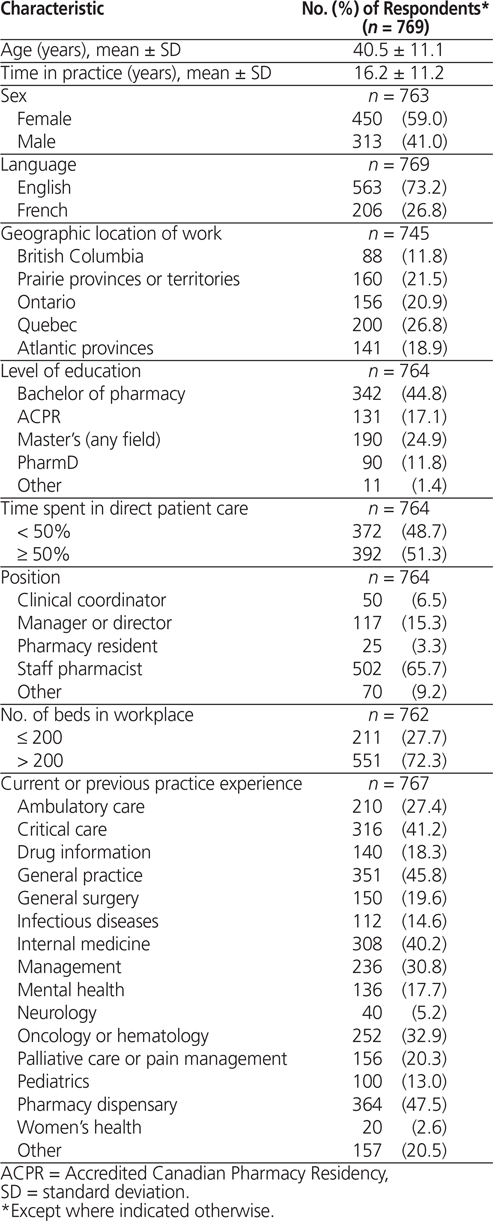
More than half of respondents (413/753 [54.8%]) had not read Canada’s Marihuana for Medical Purposes Regulations, and about one-tenth (91/753 [12.1%]) were not aware that such regulations existed. In response to a question about whether their respective institutions had a policy on MMP, nearly one-quarter (169/755 [22.4%]) reported that they were aware of an existing policy.
The majority of respondents reported having received no MMP-related education during their pharmacy undergraduate degree (491/744 [66.0%]) or through continued education or formal training (481/746 [64.5%]); however, 69.4% (518/746) had obtained some self-directed education on the topic (Figure 2). Despite limited education, 53.8% (408/759) of respondents reported being asked questions about MMP by patients or colleagues at a frequency of once a month or less.
|
|
||
|
Figure 2. Education on marijuana received by pharmacists who responded to the survey. CE = continued education. |
||
The ability to counsel others about possible drug interactions was most commonly reported as an important professional role for pharmacists (678/738 [91.9%]). Other professional roles presented in Figure 3 were also considered important by large percentages of respondents (83.7%–90.3%).
|
|
||
|
Figure 3. Respondents’ perceived professional role regarding marijuana for medical purposes. ADR = adverse drug reaction, HC = Health Canada. |
||
About two-fifths (296/747 [39.6%]) of respondents somewhat agreed that MMP is safe, and almost half (362/745 [48.6%]) somewhat agreed that it is effective (Figure 4). However, two-thirds (499/748 [66.7%]) of respondents disagreed (somewhat or completely) that they were knowledgeable about MMP (Figure 4), and about half completely disagreed that they were comfortable providing advice to patients (48.0%) or health care professionals (47.8%) regarding the use of MMP (Figure 5).
|
|
||
|
Figure 4. Respondents’ level of agreement with 3 statements about marijuana for medical purposes (MMP). |
||
|
|
||
|
Figure 5. Respondents’ level of agreement with the statement “I am comfortable providing advice on the use of marijuana for medical purposes to patients and other health care professionals [HCPs].” |
||
The results pertaining to factors that influenced respondents’ opinions on the safety, the effectiveness, and their own knowledge of MMP are reported in Tables 2–4.
Table 2. Factors Influencing Pharmacists’ Opinions on the Safety of Marijuana for Medical Purposes (MMP)*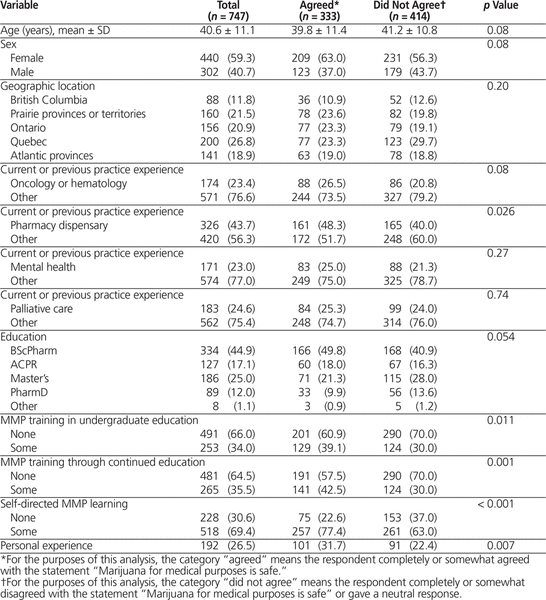
Table 3. Factors Influencing Pharmacists’ Opinions on the Effectiveness of Marijuana for Medical Purposes (MMP)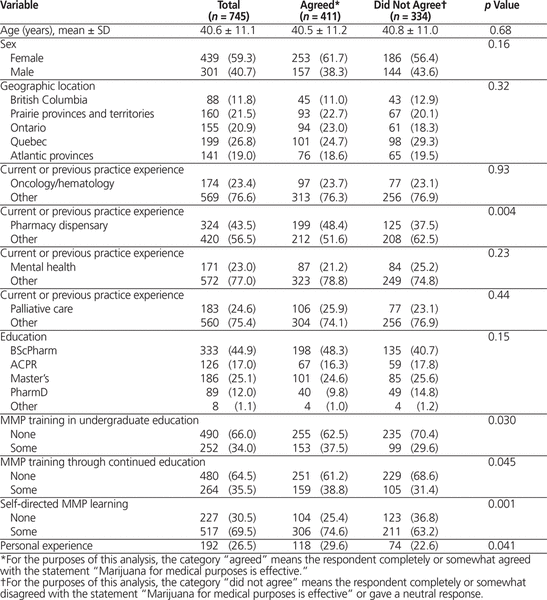
Table 4. Factors Influencing Pharmacists’ Opinions on Their Knowledge about Marijuana for Medical Purposes (MMP)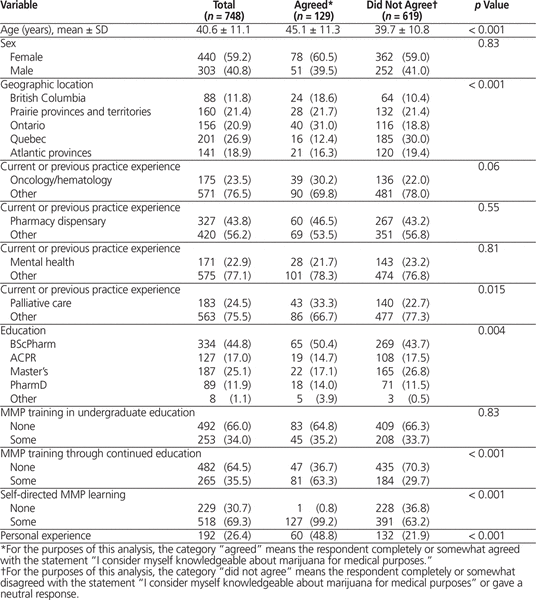
Respondents who had worked in the pharmacy dispensary were more likely to agree that MMP was safe (161/333 [48.3%]) and effective (199/411 [48.4%]). Respondents who had received some training on marijuana during their undergraduate degree, through continued education training, or by self-directed learning were more likely to agree that marijuana was safe and effective. The same was true for respondents who had personal experience with marijuana (i.e., had a prescription for marijuana for themselves or knew someone either personally or professionally with such a prescription). The majority of respondents (464/723 [64.2%]) rated pharmaceutical formulations as the method of choice for marijuana use in hospitals. However, those who agreed that MMP was safe were more likely to choose a vaporizer as the method of choice for in-hospital use by patients. The biggest barriers to respondents recommending marijuana were lack of training or knowledge, lack of evidence for use, and the fact that marijuana is not a Health Canada–approved medication.
When asked how beneficial MMP is and what its impact is on an individual’s quality of life, about half of respondents gave a neutral response (347/725 [47.9%] and 326/724 [45.0%], respectively). Most respondents thought that MMP was beneficial in treating AIDS-associated anorexia and wasting syndrome, chronic pain, multiple sclerosis, oncology-related anorexia, and nausea or vomiting. However, most respondents were unsure whether MMP could provide benefit in glaucoma, inflammation, and epilepsy.
Respondents who agreed that they were knowledgeable about marijuana were more likely to be older, to be from Ontario, to have prior marijuana-related training or education, to work in palliative care, to have a Bachelor of Science in Pharmacy or a PharmD degree, or to have personal experience with marijuana. Respondents from Quebec were the least likely to agree that they were knowledgeable about marijuana.
Additional analyses showed that respondents who had received some formal MMP-related continued education had 10% greater odds of agreeing that MMP was safe (odds ratio [OR] 1.10, 95% confidence interval [CI] 1.02–1.19) and 12% greater odds of agreeing that they were knowledgeable about MMP (OR 1.12, 95% CI 1.06–1.18). Respondents who reported having done some self-directed learning had 13% greater odds of agreeing that MMP was safe (OR 1.13, 95% CI 1.04–1.23), 11% greater odds of agreeing that MMP was effective (OR 1.11, 95% CI 1.03–1.20), and 12% greater odds of agreeing that they were knowledgeable about MMP (OR 1.12, 95% CI 1.06–1.19).
Respondents had 13% lower odds of agreeing that MMP was safe if they had a master’s degree (OR 0.87, 95% CI 0.79–0.95) or a PharmD degree (OR 0.87, 95% CI 0.78–0.98), relative to respondents who had a Bachelor of Science in Pharmacy. Respondents who had work experience in a pharmacy dispensary had 11% greater odds of agreeing that MMP was effective (OR 1.11, 95% CI 1.04–1.20).
Respondents from Quebec had 13% lower odds of agreeing that they were knowledgeable about MMP, relative to those from Ontario (OR 0.87, 95% CI 0.80–0.95). Respondents with some personal experience with MMP had 9% greater odds of agreeing that they were knowledgeable about MMP, relative to those with no personal experience (OR 1.09, 95% CI 1.03–1.16).
In this survey of hospital pharmacists across Canada, about half of respondents at least somewhat agreed that MMP is safe and effective, yet few agreed that they were knowledgeable about the topic. A small minority of respondents had received MMP-related education during their undergraduate education or through formal training, whereas almost 70% of respondents reported completing some self-directed learning on MMP.
Despite a lack of high-quality evidence to support the use of MMP, pharmacists are still confronted with questions about its use. Pharmacists are likely to encounter MMP in their practice or to receive questions about MMP from patients and other health care providers. An overwhelming number of the pharmacists who responded to this survey felt that professional roles such as being aware of the indications for marijuana use, finding relevant information, having a reliable reference, counselling on adverse effects and drug interactions, documenting use of MMP, and reporting adverse effects to Health Canada were important. The ability of pharmacists to provide these aspects of pharmaceutical care to patients receiving MMP are limited by barriers such as lack of knowledge or training, limited evidence for use, and the fact that marijuana is not a Health Canada–approved medication.
When designing the survey, the authors anticipated that pharmacists working in mental health, oncology, and palliative care would have different opinions about MMP than pharmacists working elsewhere, because of their greater likelihood of exposure to patients using MMP. The survey did show that pharmacists working in palliative care were more likely to consider themselves knowledgeable about MMP, perhaps because pharmacists working in this practice area are more likely to encounter patients using MMP through their focus on supportive care therapies.
It was also predicted that pharmacists working in British Columbia and Quebec would have different opinions on MMP than pharmacists working in other Canadian provinces and territories. There are no differences in provincial legislation on MMP, as all provinces are subject to the Marihuana for Medical Purposes Regulations. Instead, these predictions were based on the fact that British Columbia has a long social history of marijuana use, and Quebec health care professionals were early adopters of MMP in clinical practice. For example, the world’s first MMP registry opened in late spring 2015 at McGill University in Montréal, Quebec; it is designed to collect information on the safety and effectiveness of marijuana in the treatment of various health conditions.23 However, in the current study, it was pharmacists in Ontario who were more likely to consider themselves knowledgeable about MMP, with pharmacists in Quebec being the least likely to consider themselves knowledgeable.
The strengths of this study included its large sample size encompassing pharmacists all across Canada and the fact that it is the first study of its kind. Because of Canada’s anti-spam laws, it was difficult to disseminate surveys to many of Canada’s pharmacists. This limited the ability to reach the entire target population (i.e., all hospital pharmacists in Canada) and may have introduced some responder bias. Multiple methods were used in trying to reach more potential respondents, but the response rate remained low relative to similar studies.13–15 In addition, some interrelatedness may have been present in the results, since respondents who felt knowledgeable about MMP would probably be more comfortable providing advice to patients and other health care professionals.
Many pharmacists work in institutions that do not have a policy in place on the use of MMP. This is an area that requires development, particularly to identify the most appropriate method of using MMP in hospitals and ways to convert from one dosage form to another. Integration of unbiased MMP-related education into pharmacy school curricula may be beneficial as the use of MMP continues to grow in Canada. Future studies evaluating the risks and benefits of marijuana are needed for pharmacists and other health care professionals to make informed decisions about MMP with their patients. In addition, development of tools to help health care professionals evaluate the risk–benefit ratio of MMP for different medical conditions will be useful. It may be interesting to revisit this survey in 5 to 10 years to determine whether hospital pharmacists’ opinions about and knowledge base related to MMP change after marijuana use becomes more common in Canada.
Despite these potential advances in the future, the current situation, in which legislative positions are likely to continue changing and literature supporting MMP use is lacking, creates a difficult working environment for hospital pharmacists.
About half of Canadian hospital pharmacists who responded to this survey somewhat agreed that MMP is safe and/or effective, yet few considered themselves knowledgeable about this form of therapy, despite 70% of respondents reporting some self-directed learning on the topic. Factors that influenced respondents’ opinions about the safety and effectiveness of and their knowledge about MMP included age, education, area of clinical practice, province of work, and personal experience.
1. Makkar J. Medical marijuana update: summary of regulations; new role for physicians and possible concerns. Ont Med Rev. 2014;:17–9. Available from: https://www.oma.org/Resources/Documents/March14_Medical_Marijuana_pp17-19.pdf
2. Marihuana Medical Access Program (MMAR) statistics 2013. Ottawa (ON): Health Canada; 2013 [cited 2014 Oct 10]. Available from: www.hc-sc.gc.ca/dhp-mps/marihuana/stat/index-eng.php#a12
3. Vartanian T. Medical marijuana users could help researchers define risks, benefits. CBC News. 2015 Mar 27 [updated 2015 Mar 31; cited 2015 Jul 5]. Available from: www.cbc.ca/news/health/medical-marijuana-users-could-help-researchers-define-risks-benefits-1.3012489
4. Marijuana. Ottawa (ON): Canadian Centre on Substance Abuse; 2016 [cited 2014 Mar 24]. Available from: www.ccsa.ca/Eng/topics/Marijuana/Pages/default.aspx
5. Marihuana for Medical Purposes Regulations. SOR/2013-119, 2015 [cited 2015 Jul 30]. Available from: http://laws-lois.justice.gc.ca/PDF/SOR-2013-119.pdf
6. Authorized licensed producers under the Marihuana for Medical Purposes Regulations. Ottawa (ON): Health Canada; [cited 2015 Jul 24]. Available from: www.hc-sc.gc.ca/dhp-mps/marihuana/info/list-eng.php
7. Volkow ND, Baler, RD, Compton WM, Weiss S. Adverse health effects of marijuana use. N Engl J Med. 2014;370(23):2219–27.


8. Belendiul KA, Baldini LL, Bonn-Miller MO. Narrative review of the safety and efficacy of marijuana for the treatment of commonly state-approved medical and psychiatric disorders. Addict Sci Clin Pract. 2015;10(1):10.
9. Martín-Sánchez E, Furukawa TA, Taylor J, Martin JL. Systematic review and meta-analysis of cannabis treatment for chronic pain. Pain Med. 2009;10(8):1353–68.

10. Phillips TJC, Cherry CL, Cox S, Marshall SJ, Rice ASC. Pharmacological treatment of painful HIV-associated sensory neuropathy: a systematic review and meta-analysis of randomised controlled trials. PLoS One. 2010;5:e14433.
11. Haney M, Gunderson EW, Rabkin J, Hart CL, Vosburg SK, Comer SD, et al. Dronabinol and marijuana in HIV-positive marijuana smokers: caloric intake, mood, and sleep. J Acquir Immune Defic Syndr. 2007;45(5):545-54.

12. Narcotic Control Regulations. C.R.C., c. 1041, 2016 [cited 2016 Apr 21]. Available from: http://laws-lois.justice.gc.ca/PDF/C.R.C.,_c._1041.pdf
13. Shanthakumar N. Canadian pharmacists and natural health products: identifying professional responsibilities [thesis]. Toronto (ON): University of Toronto; 2009.
14. Johnson T, Boon H, Jurgens T, Austin Z, Moineddin R, Eccott L, et al. Canadian pharmacy students’ knowledge of herbal medicine. Am J Pharm Educ. 2008;72(4):75.


15. Welna EM, Hadsall RS, Schommer JC. Pharmacists’ personal use, professional practice behaviors, and perceptions regarding herbal and other natural products. J Am Pharm Assoc. 2003;43(5):602–11.
16. Chang ZG, Kennedy DT, Holdford DA, Small RE. Pharmacists’ knowledge and attitudes toward herbal medicine. Ann Pharmacother. 2000;34(6):710–5.

17. Dolder C, Lacro J, Dolder N, Gregory P. Pharmacists’ use of and attitudes and beliefs about alternative medications. Am J Health Syst Pharm. 2003; 60(13):1352–7.
18. Bokma A. What’s up with herbals? Pharm Pract. 2000;16(12):54–61.
19. Wood, V. Educating the public on the use of OTCs. Pharm Post. 2005; 13(4):49–50.
20. Natural health products. Ottawa (ON): Health Canada; 2004 [cited 2014 Oct 10]. Available from: www.hc-sc.gc.ca/dhp-mps/prodnatur/index-eng.php
21. National statistics: provincial/territorial statistics – pharmacists. Ottawa (ON): National Association of Pharmacy Regulatory Authorities; 2015 [cited 2015 Jul 24]. Available from: http://napra.ca/pages/Practice_Resources/National_Statistics.aspx?id=2103
22. Health human resources: pharmacists in Canada, 2011. Ottawa (ON): Canadian Institute for Health Information; 2011 [cited 2015 Jul 5]. Available from: www.cihi.ca/CIHI-ext-portal/pdf/internet/PHARM2011_INFOSHEET_EN
23. Medical marijuana registry in Quebec called world’s 1st. CBC News. 2015 May 11 [cited 2015 Jul 5]. Available from: www.cbc.ca/news/health/medical-marijuana-registry-in-quebec-called-world-s-1st-1.3069316
Competing interests: None declared.
Funding: Fiona Mitchell received a travel grant from Sandoz during the conduct of the study.
The authors would like to thank Joshua Murray for statistical support.
Canadian Journal of Hospital Pharmacy, VOLUME 69, NUMBER 2, March-April 2016